
Taking care of slopes
JUST as a car needs to be properly maintained, slopes also need to be kept in tip-top condition. Maintenance of slopes is simple to do, but it is often neglected. Maintenance is especially crucial when it comes to slopes as it can make the difference between safety and disaster.
Responsibility to maintain the integrity of a slope rests with its owner, be it private or public ownership. That said, people living near hillsides or slopes should not take it for granted that maintenance will be done. So to ensure life and property are continuously safeguarded, they can take their own initiative and check the slope for any signs of neglect, and perform the simple procedures listed below.
1. Debris in drains on slopes
Drains need to be clear and free from any blockages, or this will impede the drainage of water away from the slope. As mentioned previously, excess water and poor drainage is the main cause of landslides, hence the importance of keeping drains flowing. If you see blockages, simply clear the drain.
2. Damaged drains
If there is damage, a proper repair needs to be done to ensure water flows where it is needed. Simply placing a brick or a stone into a crack in the drain will not sufficient as water can still flow into the crack. Alert the slope owner of the damage and keep tabs on it to ensure the repair is done
3. Cracks on slope or wall surface
The same with damaged drains, the slope owner should be alerted to the damage so proper repair work can be done.
4. Blocked weepholes and drain pipes
As these are vital parts of the slope drainage system, they should always be unobstructed so water can flow through them.
5. Vegetation growing in cracks
Any vegetation growing in cracks of slope surfaces should be removed immediately. If left unchecked, the growth of the plant can enlarge the crack and make the damage worse.
6. No vegetation on slope surfaces.
Surfaces of slopes should always be covered and should never be bare. Bare patches on slopes can be replanted with grass or other types of plants that have a good rooting system.
7. Voids or missing pieces in the wall
Missing parts of a retaining wall means the integrity of the structure has been compromised. Again, a proper repair needs to be done to replace any missing pieces.
8. Loose rocks or debris on slopes
Watch for loose rock or debris from slopes. Remove loose rocks, and try to see they are falling down.
9. Leaking water pipes.
Water pipes are often buried below ground and any leaks will be very difficult to spot. However, it is a vital part of slope maintenance and your local water authority must be informed immediately if there is suspicion of a failed or failing water pipe.
10. Rusted metal structures
Slopes can be tricky to climb, and rusted handrails and staircases should be replaced with new ones, so you can be safe while performing inspection of the slope.
>The JKR provides clear guidelines on slope maintenance targeted at engineers and maintenance personnel. These guidelines are also available to the public. Familiarisation with these guidelines can be useful. The document titled ‘Guidelines on Slope Maintenance in Malaysia’ can be downloaded from the website of the Cawangan Kejuruteraan Cerun, JKR, at slopes.jkr.gov.my.
Make a report:
> If you are in a landslide, call 999.
> If you see signs of slope failure, call the engineering department of your local authority.
> For more information, visit the website of the Cawangan Kejuruteraan Cerun, JKR at slopes.jkr.gov.my
Responsibility to maintain the integrity of a slope rests with its owner, be it private or public ownership. That said, people living near hillsides or slopes should not take it for granted that maintenance will be done. So to ensure life and property are continuously safeguarded, they can take their own initiative and check the slope for any signs of neglect, and perform the simple procedures listed below.
1. Debris in drains on slopes
Drains need to be clear and free from any blockages, or this will impede the drainage of water away from the slope. As mentioned previously, excess water and poor drainage is the main cause of landslides, hence the importance of keeping drains flowing. If you see blockages, simply clear the drain.
2. Damaged drains
If there is damage, a proper repair needs to be done to ensure water flows where it is needed. Simply placing a brick or a stone into a crack in the drain will not sufficient as water can still flow into the crack. Alert the slope owner of the damage and keep tabs on it to ensure the repair is done
3. Cracks on slope or wall surface
The same with damaged drains, the slope owner should be alerted to the damage so proper repair work can be done.
4. Blocked weepholes and drain pipes
As these are vital parts of the slope drainage system, they should always be unobstructed so water can flow through them.
5. Vegetation growing in cracks
Any vegetation growing in cracks of slope surfaces should be removed immediately. If left unchecked, the growth of the plant can enlarge the crack and make the damage worse.
6. No vegetation on slope surfaces.
Surfaces of slopes should always be covered and should never be bare. Bare patches on slopes can be replanted with grass or other types of plants that have a good rooting system.
7. Voids or missing pieces in the wall
Missing parts of a retaining wall means the integrity of the structure has been compromised. Again, a proper repair needs to be done to replace any missing pieces.
8. Loose rocks or debris on slopes
Watch for loose rock or debris from slopes. Remove loose rocks, and try to see they are falling down.
9. Leaking water pipes.
Water pipes are often buried below ground and any leaks will be very difficult to spot. However, it is a vital part of slope maintenance and your local water authority must be informed immediately if there is suspicion of a failed or failing water pipe.
10. Rusted metal structures
Slopes can be tricky to climb, and rusted handrails and staircases should be replaced with new ones, so you can be safe while performing inspection of the slope.
>The JKR provides clear guidelines on slope maintenance targeted at engineers and maintenance personnel. These guidelines are also available to the public. Familiarisation with these guidelines can be useful. The document titled ‘Guidelines on Slope Maintenance in Malaysia’ can be downloaded from the website of the Cawangan Kejuruteraan Cerun, JKR, at slopes.jkr.gov.my.
Make a report:
> If you are in a landslide, call 999.
> If you see signs of slope failure, call the engineering department of your local authority.
> For more information, visit the website of the Cawangan Kejuruteraan Cerun, JKR at slopes.jkr.gov.my








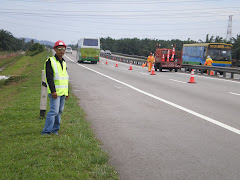



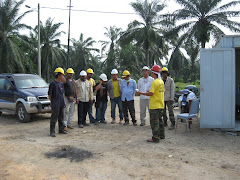
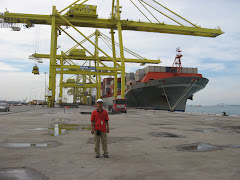
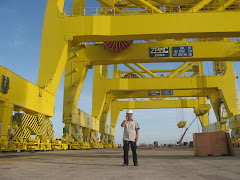












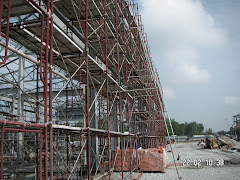
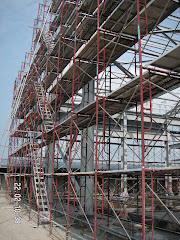



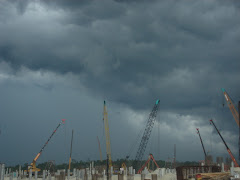














No comments:
Post a Comment